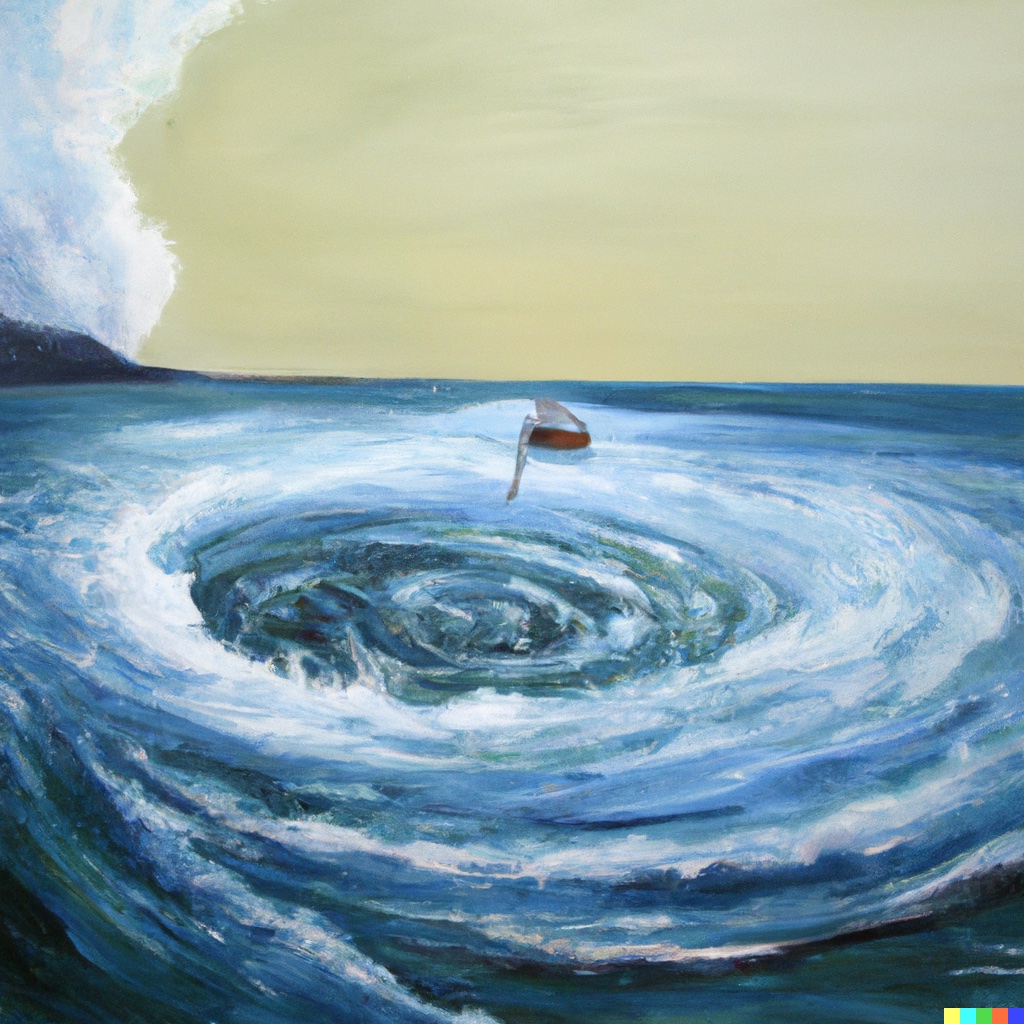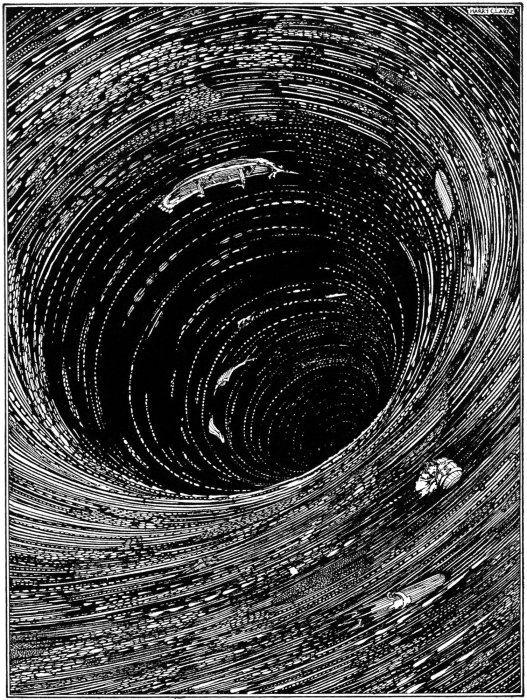A Descent Into the Maelström
While reading through Marshall McLuhan’s biography recently, I became aware of an interesting short story by Edgar Allan Poe: «A Descent into the Maelström». McLuhan seemed fascinated by this story because he saw it as a kind of metaphor for how to stay afloat in the eternally spinning vortex of modern technologies and media. Since then, I’ve observed for myself that this metaphor can be a helpful anchor and calming mantra for keeping cool in the technology and software landscape, which is so often driven by hypes and big money interests.
But one thing at a time. What is the story, which revolves around the Maelstrom, roughly about?

The story recounts the tale of a ship, manned by two brothers, which gets caught in a raging vortex. One of the brothers, the narrator of the story, shares his thoughts as the boat is dragged steadily into the abyss. Initially, he can only perceive the horror of the vortex. But in a slow-motion moment of clarity, he realizes, however, that the Maelström is as much an awe-inspiring as it is a fascinating phenomenon that can be studied and thereby understood.
Using an almost scientific, objective analysis and observation of the vortex and the objects that are drawn into it, he gradually begins to see more and more patterns. Patterns that help him develop a path of action for himself. In strong contrast to this is his brother, who loses his mind due to the seemingly endless complexity of the situation and thus becomes incapable of acting.
I made, also, three important observations. The first was, that, as a general rule, the larger the bodies were, the more rapid their descent — the second, that, between two masses of equal extent, the one spherical, and the other of any other shape, the superiority in speed of descent was with the sphere — the third, that, between two masses of equal size, the one cylindrical, and the other of any other shape, the cylinder was absorbed the more slowly.
Energized by his observations, he decides to take action and escape the downward pull in a barrel of water. After a desperate attempt to save his brother, who has been blinded and incapacitated by panic, he bravely plunges into the spray. Finally, he accomplishes the seemingly impossible of getting a grip on the situation and actually escaping the vortex.
So why was McLuhan so drawn to this story? Is there a message one could take away from it?I believe that the story’s metaphor perfectly captures the ever-increasing technological whirlpool that humanity is caught in due to progress and innovation.
It visualizes a familiar scenario that we can all relate to. Maybe from conversations with previous generations, but also with ourselves: the feeling of being overwhelmed by the speed of change.
But in contrast to the powerlessness often experienced during those kind of moments, the story continues. It reveals a common thread that can be seen as a blueprint for behavior in complex situations. These situations are often characterized by uncertainty and incomplete information, and can easily overwhelm those who react impulsively or out of fear or emotion. Situations we encounter very often in our modern and complex society.
Potential Insights
These are some of the lessons for dealing with seemingly overwhelming complexity that can be derived from this story:
Reviewing this list, it’s clear that many of these recommendations are relevant to navigating the complexities of modern life, which is increasingly shaped by technology. Perhaps this is why McLuhan was so captivated by the story.
Admitting that you are stuck in a complex situation from which there is no quick, easy way out can actually be quite helpful. It allows you to clear your head, look for more long-term, sustainable ways out, and most importantly, tackle those ways one step at a time. I think there is only one thing left to do: Mr. Poe and Mr. McLuhan, thank you sincerely for the stimulating conversation.
